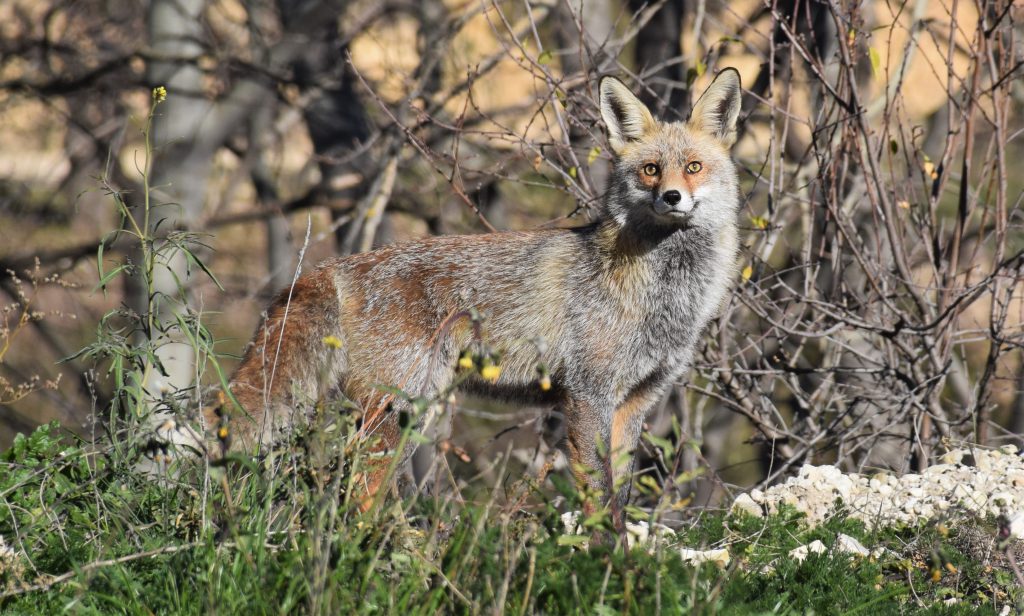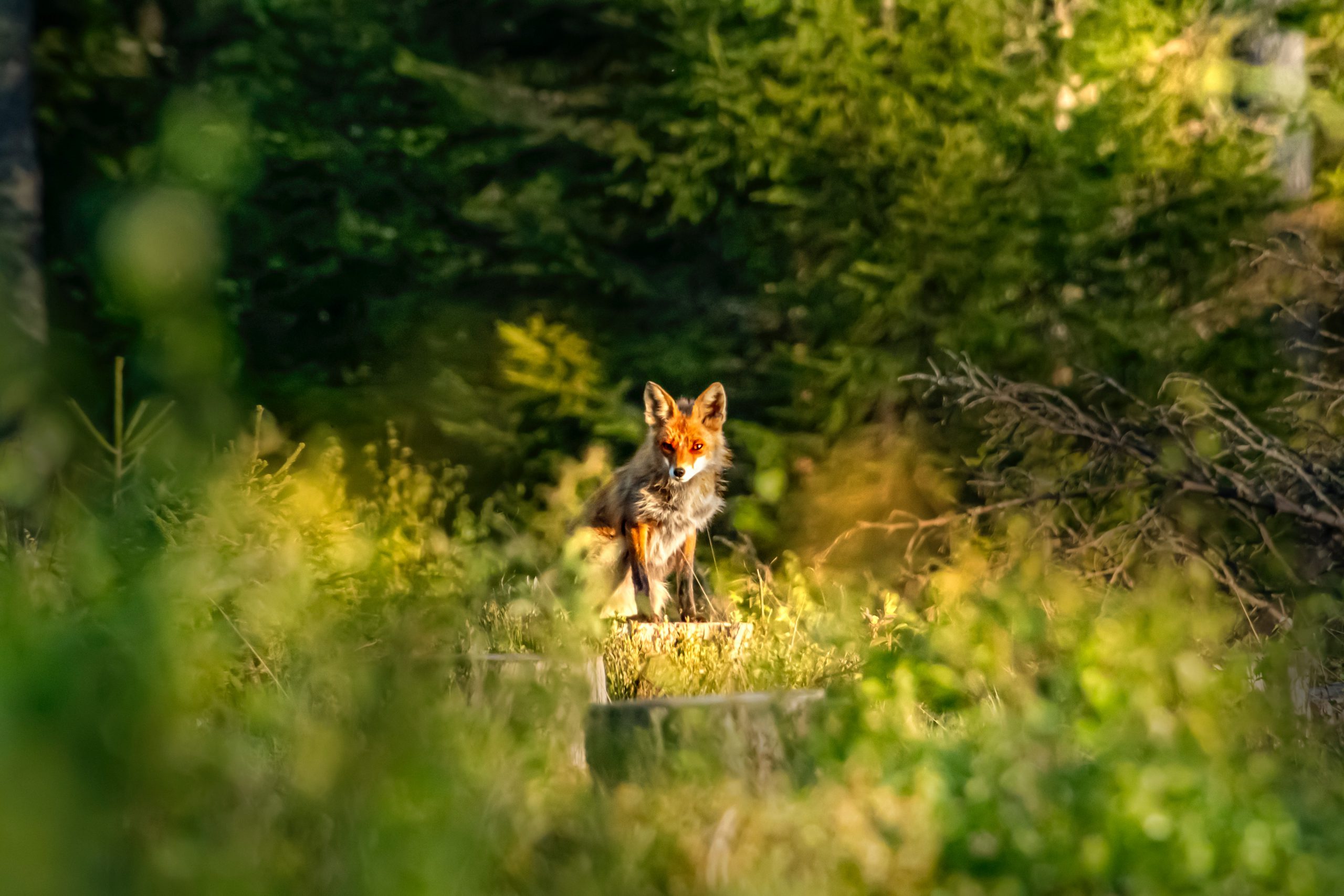Have you ever wondered if foxes possess the ability to climb trees? These cunning and agile creatures have captivated human curiosity for centuries.
In this article, we will explore the fascinating topic of whether foxes can indeed climb trees and the mechanics behind their climbing abilities.
How Do Foxes Climb Trees?
Semi-Retractable Claws
One key feature that enables foxes to climb trees is their semi-retractable claws. These claws are designed to provide optimal grip on various surfaces, including tree trunks and branches. The ability to retract their claws partially allows foxes to maintain better control and balance while ascending or descending trees.
Powerful Hind Legs
Foxes possess powerful hind legs, which aid them in leaping and climbing. These hind limbs are well-adapted for swift movements and provide the necessary strength to propel the fox upward. With their hind legs serving as a springboard, foxes can make impressive vertical jumps to reach higher branches.
Strong Forelegs
In addition to their hind legs, foxes rely on their strong forelegs for climbing. Their forelimbs provide stability and support as they navigate the branches. These limbs assist in gripping and maneuvering through the intricate network of branches, allowing foxes to traverse tree canopies with relative ease.
Flexible Ankles
Another remarkable aspect of a fox’s anatomy that aids in tree climbing is its flexible ankles. These joints allow for a wide range of motion, enabling the fox to adapt to various angles and positions while traversing tree branches. The flexibility of their ankles enhances their agility and dexterity, facilitating efficient movement in the arboreal environment.
Camouflage Coats
The natural camouflage of foxes plays a role in their tree-climbing abilities as well. Their coats, typically consisting of reddish-brown fur, help them blend into their surroundings, making it easier to hide from potential predators or prey. This natural camouflage allows foxes to move discreetly through trees, utilizing the element of surprise to their advantage.
Why Do Foxes Climb Trees?
While foxes are not habitual tree climbers like some other animals, they do venture into the treetops for specific reasons. Understanding these motivations provides insights into the behavior of these adaptable creatures.
Seeking Refuge and Safety
One reason foxes climb trees is to seek refuge and safety from predators or threats on the ground. By ascending to higher branches, they can escape potential danger and find a secure vantage point to observe their surroundings. This behavior allows them to remain hidden and out of reach, reducing their vulnerability.
Hunting and Foraging Opportunities
Foxes are opportunistic hunters and foragers, and climbing trees can provide them with advantageous positions to spot potential prey or food sources. From tree perches, they can scan the area for small mammals, birds, or even fruits that may be within their reach. By utilizing trees as vantage points, foxes can enhance their hunting success.
Territory Marking and Communication
Foxes are known to mark their territories, and tree climbing can play a role in this behavior. By climbing trees, they can leave scent marks on branches or trunks, signaling their presence and territorial ownership to other foxes in the area. This form of communication helps establish boundaries and avoid conflicts.
Red Fox vs Grey Fox

Red foxes (Vulpes vulpes) and grey foxes (Urocyon cinereoargenteus) are two distinct species of foxes that exhibit noticeable differences in various aspects. In terms of physical appearance, red foxes have a reddish-brown fur with a white underbelly and black legs, while grey foxes feature a grayish-brown fur with a rusty-red patch on their necks. Size-wise, red foxes are generally larger compared to grey foxes.
These foxes also differ in their preferred habitats. Red foxes can adapt to a wide range of environments, including forests, grasslands, and even urban areas. On the other hand, grey foxes are primarily found in woodland areas.

When it comes to diet, both red and grey foxes are omnivorous, but their hunting styles can vary. Red foxes are primarily ground hunters, relying on stealth and speed to catch their prey. In contrast, grey foxes possess exceptional climbing abilities and are known to pursue prey in arboreal settings.
To further illustrate the differences, the following table provides a comprehensive comparison between red foxes and grey foxes:
| Feature | Red Fox | Grey Fox |
|---|---|---|
| Coloration | Reddish-brown fur with a white underbelly and black legs | Grayish-brown fur with a rusty-red patch on the neck |
| Size | Larger in size compared to the grey fox | Smaller in size compared to the red fox |
| Habitat | Found in a wide range of habitats including forests, grasslands, and urban areas | Primarily found in woodland areas |
| Diet | Omnivorous, with a varied diet that includes small mammals, birds, insects, fruits, and vegetables | Omnivorous, feeding on small mammals, birds, insects, fruits, and nuts |
| Hunting Style | Primarily a ground hunter, relying on stealth and speed to catch prey | Capable of climbing trees and may pursue prey in arboreal settings |
| Climbing Ability | Limited climbing ability, but may climb trees in specific situations, such as escaping predators or seeking refuge | Exceptional climbers, with the ability to scale trees proficiently |
| Social Behavior | Often solitary, but may form small family groups during the breeding season | Tend to be more solitary, with less social interaction |
| Vocalizations | Known for a wide range of vocalizations, including barks, screams, and howls | Communicate through various vocalizations, including barks and screams |
| Geographic Range | Widespread distribution across North America, Europe, Asia, and Africa | Found in parts of North America, specifically in the United States and Mexico |
| Conservation Status | Least Concern | Least Concern |
While this table provides an overview of the differences between red foxes and grey foxes, it’s important to note that there can be variations and overlapping traits within each species, particularly in different geographical populations.
While foxes may not be the most adept tree climbers in the animal kingdom, they do possess the physical capabilities to navigate trees. Their semi-retractable claws, powerful hind legs, strong forelimbs, flexible ankles, and camouflage coats all contribute to their ability to climb trees when necessary.
Whether seeking safety, hunting opportunities, or engaging in territorial communication, foxes demonstrate their resourcefulness and adaptability in the arboreal realm. So, the next time you gaze upon a fox perched in a tree, marvel at its agility and the multitude of reasons that brought it to such heights.

